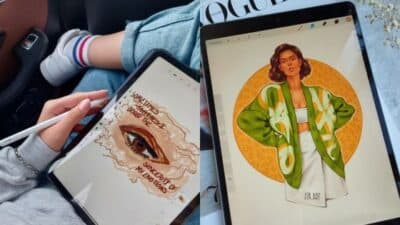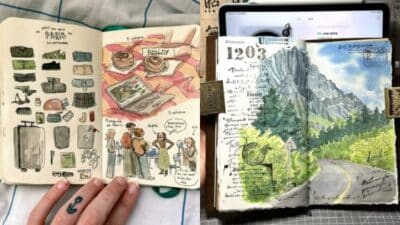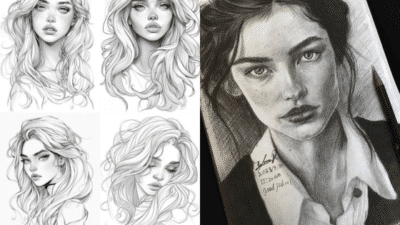Hand drawing is a valuable skill that anyone can learn, regardless of their starting point. With simple techniques and regular practice, anyone can improve their hand drawing abilities quickly. This post will guide readers through basic steps and helpful tips to create beautiful hand-drawn images easily.
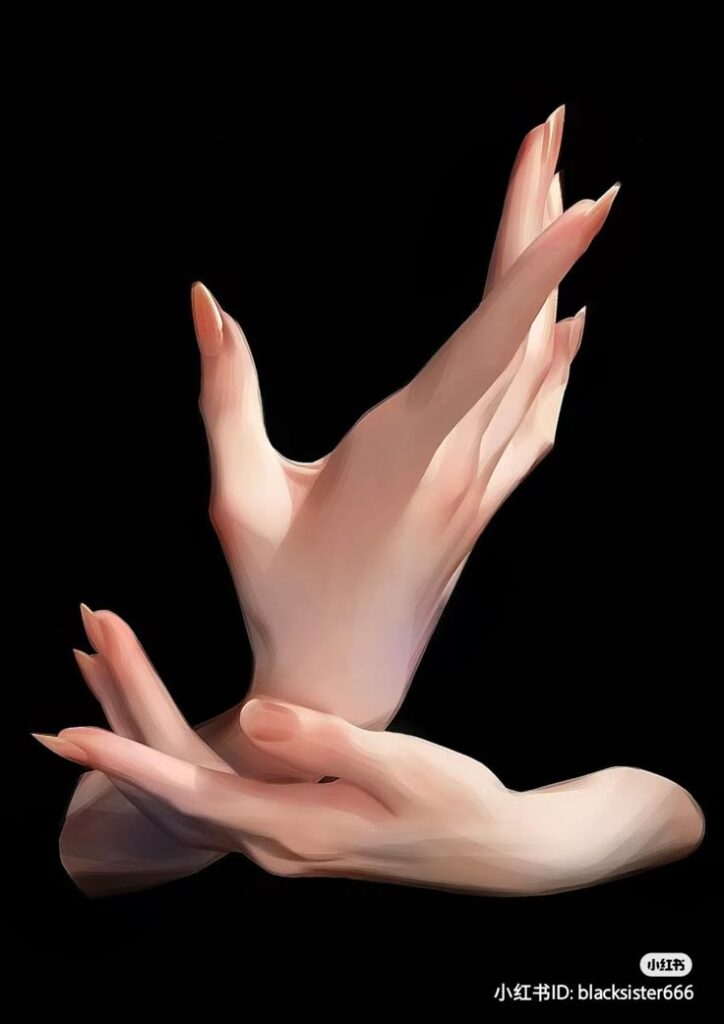

Whether drawing for fun or as a hobby, starting with the basics is important. Understanding simple shapes and how to build on them can make the process enjoyable. Readers will find easy examples and techniques to help them on their art journey.
By addressing common challenges and providing solutions, this article aims to make hand drawing accessible. Each section is designed to empower artists of all levels to draw with confidence and creativity.
Key Takeaways
- Simple shapes are the foundation for hand drawing.
- Techniques and practice can lead to quick improvement.
- Overcoming challenges makes hand drawing more enjoyable.
Basics of Hand Drawing

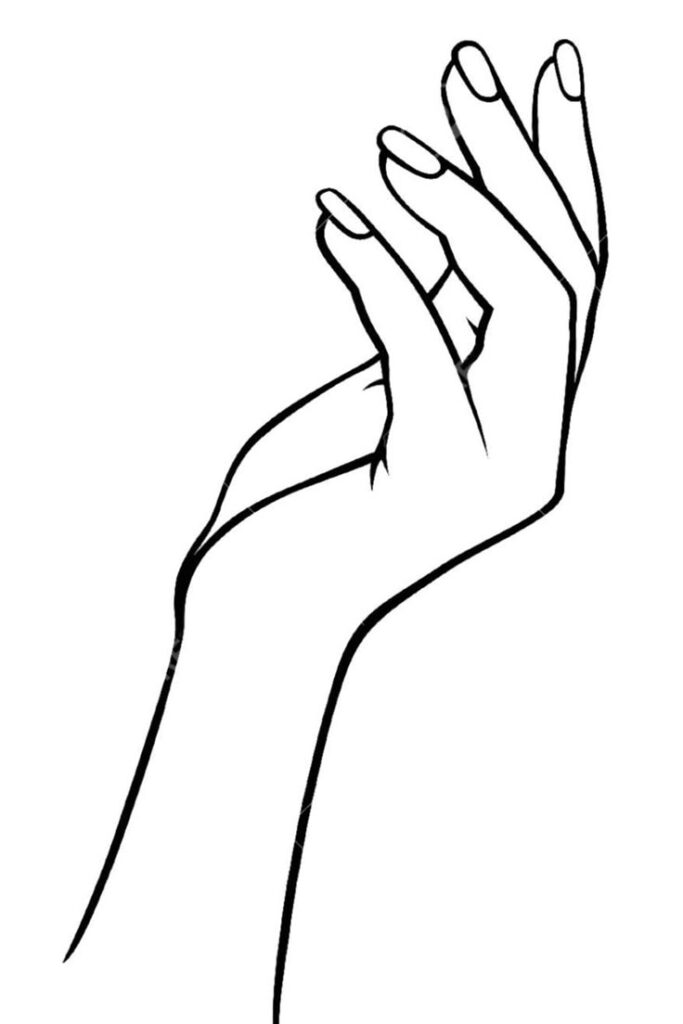
Hand drawing requires an understanding of hand anatomy and the right materials. Knowing the structure of hands helps in capturing their details. Choosing suitable materials enhances the drawing process and final result.
Understanding Hand Anatomy
When drawing hands, it is vital to know the basic structure. A hand has several parts: fingers, palm, and wrist.
- Fingers consist of three segments, called phalanges, except for the thumb, which has two.
- The palm connects the fingers and supports movement.
- Wrist allows flexibility.
Studying how these parts move together helps in drawing realistic hands. Observing hands in different positions can also improve drawing skills. Practicing various poses will aid in understanding proportions and angles.
Materials Needed for Hand Drawing
Choosing the right materials is essential for effective hand drawing. Here are some common items used:
- Pencils: Graphite pencils of various hardness help achieve different shades.
- Paper: A smooth surface allows for cleaner lines.
- Erasers: Kneaded erasers are great for lifting graphite without damage.
- Reference Images: Use photos of hands to improve accuracy.
These materials can enhance the drawing experience and promote better results. Having quality tools makes it easier to experiment with techniques and styles, leading to more satisfying artworks.
Step-by-Step Drawing Tutorial


Creating a drawing can be simple and fun. Following these steps makes it easier to progress from basic shapes to more detailed and shaded drawings. Here are the key stages to help anyone improve their hand drawing skills.
Starting with Basic Shapes
To begin a drawing, he or she should start with basic shapes. This approach helps in establishing the structure. For example:
- Circle: Useful for heads or round objects.
- Square: Good for boxes and buildings.
- Triangle: Can form roofs or mountains.
Using a light pencil, sketch these shapes first. It’s important to keep them simple; they act as guides for the final drawing. This method allows the artist to focus on proportions before adding details. Once the shapes are in place, they can adjust their sizes and angles. This basic framework makes the drawing process easier.
Adding Details and Refinements


After basic shapes are set, the next step is adding details. This is when the artist brings the drawing to life. Focus on these aspects:
- Facial Features: If drawing a face, start with eyes, nose, and mouth.
- Clothing and Textures: Adding folds and lines can suggest fabric movement.
- Background Elements: Include trees, buildings, or other items to add context.
It helps to erase parts of the basic shapes that are no longer needed. Refinements enhance the drawing and give it character. Each detail should feel connected to the shapes used as the foundation. Patience is key in this phase.
Shading and Texturing Techniques
Shading adds depth and realism. To accomplish this, the artist should consider light sources. Here are practical techniques:
- Hatching: Use parallel lines to fill shadows.
- Cross-Hatching: Overlap lines for darker areas.
- Blending: Use a blending tool to soften shadows.
Start shading lightly, gradually building up darkness where needed. This control is crucial for creating contrast. Texture can be shown through varying pencil pressures and techniques. Understanding how light interacts with objects enhances the final piece. Practice will improve these skills over time.
Drawing Cartoon Hands


Cartoon hands are essential for conveying character and emotion. By focusing on stylized proportions and the expression of feelings, one can create engaging and lively illustrations.
Stylizing the Proportions
Cartoon hands are usually not realistic. They can be larger or smaller than normal. This stylization helps to emphasize actions and emotions.
When drawing cartoon hands, think about the shapes involved. Use squares, circles, and triangles to build the hand’s structure.
- Thumb: The thumb should be thick and short. This gives a strong, cartoonish look.
- Fingers: Fingers can be simple and rounded. Usually, they are fewer than four or five, often three or four.
- Palm: The palm can be exaggerated in size. A larger palm makes actions clear.
These proportions help create a playful style while keeping hands recognizable.
Expressing Emotions and Actions
Cartoon hands can express a range of emotions. Whether happy, sad, or angry, hands add depth to the character.
To show emotions, use different poses and gestures. For a cheerful character, the hands might be raised or open wide. In contrast, a sad character might have their hands hanging low.
- Waving: This shows friendliness.
- Clenching: A fist can show anger or determination.
- Covering Face: This can express surprise or shame.
Using simple lines and curves can effectively show action. Crafted hands not only support storytelling but also enhance the overall appeal of the cartoon.
Common Challenges and Solutions

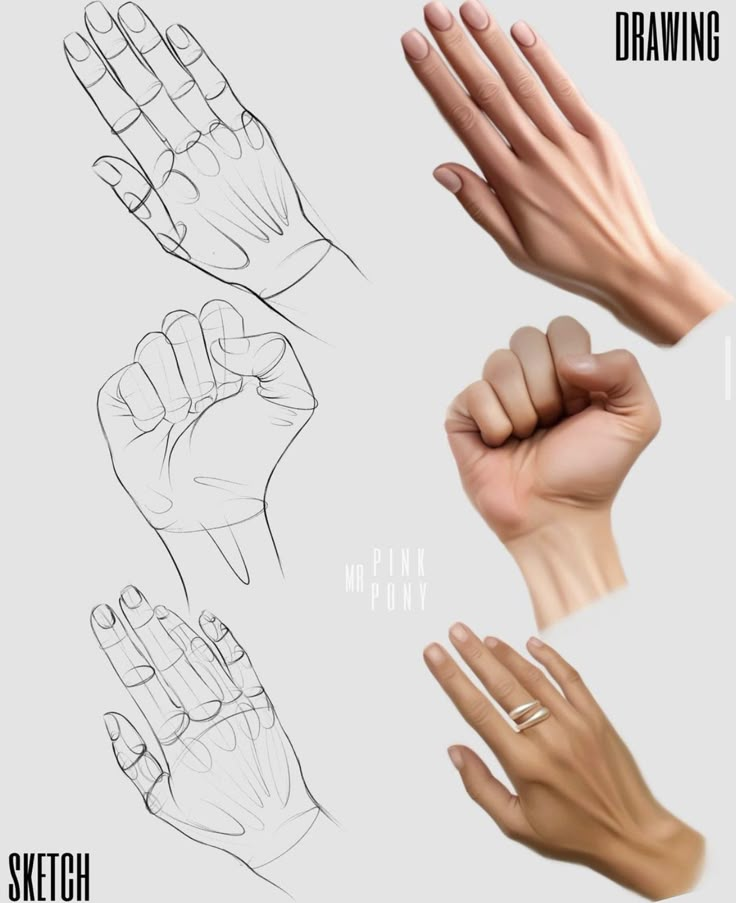
Many artists face challenges with perspective, foreshortening, and creating realistic skin textures. These skills take practice but can be tackled with specific techniques and tips.
Dealing with Perspective and Foreshortening
Perspective refers to how objects appear smaller as they get farther away. Foreshortening makes parts of objects look shorter than they are, especially in human figures. This is crucial when drawing hands, as they often appear differently based on their position.
To manage perspective, artists can use guidelines. Drawing a grid can help keep proportions accurate. It is also useful to study real-life references. Observing how light and shadow interact can aid in seeing depth.
Foreshortening can seem tricky at first. A good trick is to break down complex shapes into simple forms. For instance, start with a basic block for the hand and adjust the size based on the perspective. Sketching the hand in different positions helps grasp how its shape changes.
Creating Realistic Skin Textures

Creating skin textures adds life to drawings. Different skin tones and textures require blending and layering techniques. Artists should experiment with various tools like pencils and blending stumps.
Starting with a base color helps. Layering in different hues creates depth. For instance, artists can use peach or light brown as a base and add darker shades in shadows.
Texture details are key too. Tiny lines and dots can simulate pores and fine lines. Observing photographs can provide insights into how light reflects on skin. When drawing hands, focus on how the skin bends and stretches at the joints for realism.
Incorporating these techniques will enhance the overall quality of hand drawings, making them more lifelike.
Practice and Improvement
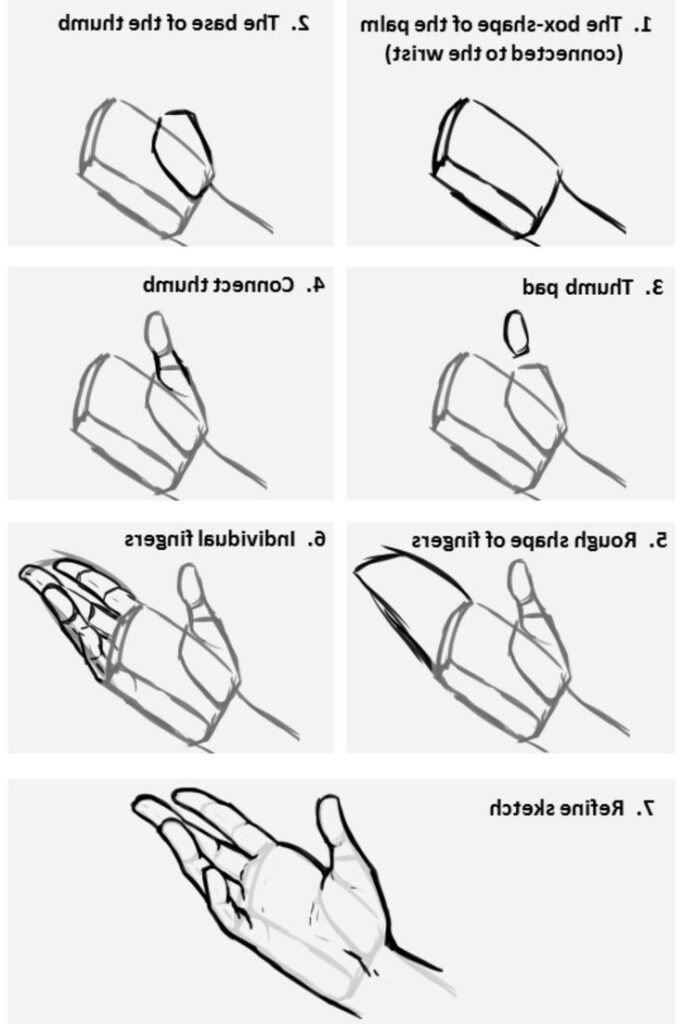

To become better at hand drawing, regular practice and exploration are key. By doing specific exercises and trying out various styles, artists can hone their skills. Learning from mistakes also plays a critical role in improving overall drawing ability.
Regular Practice Exercises
Setting aside time for practice is essential. Daily or weekly exercises can help develop muscle memory. Simple exercises include:
- Contour Drawing: Focus on outlines without looking at the paper. This boosts hand-eye coordination.
- Gesture Drawing: Quick sketches of moving subjects enhance an artist’s ability to capture action and form.
- Still Life Studies: Arrange objects and draw them. This improves observation skills and understanding of light and shadow.
Incorporating diverse subjects in practice can prevent boredom. Artists should track their progress over time to notice improvements.
Experimenting with Different Styles
Trying new styles expands an artist’s abilities. This exploration encourages creativity and unique expressions. Here are ways to experiment:
- Different Mediums: Use pencils, charcoal, or inks for different effects. Each medium teaches new techniques.
- Copy Famous Artists: Recreate works of well-known artists. This can reveal different approaches and methods.
- Create a Style Mix: Combine features from various styles to find a personal touch.
Artists should document their attempts to see how styles influence their work. This continual curiosity can lead to significant artistic growth.
Learning from Mistakes
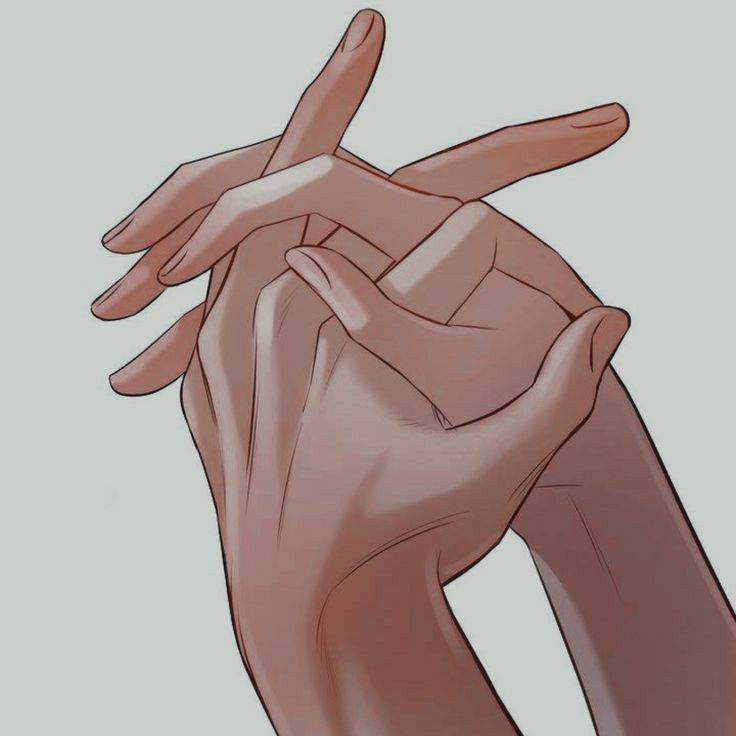
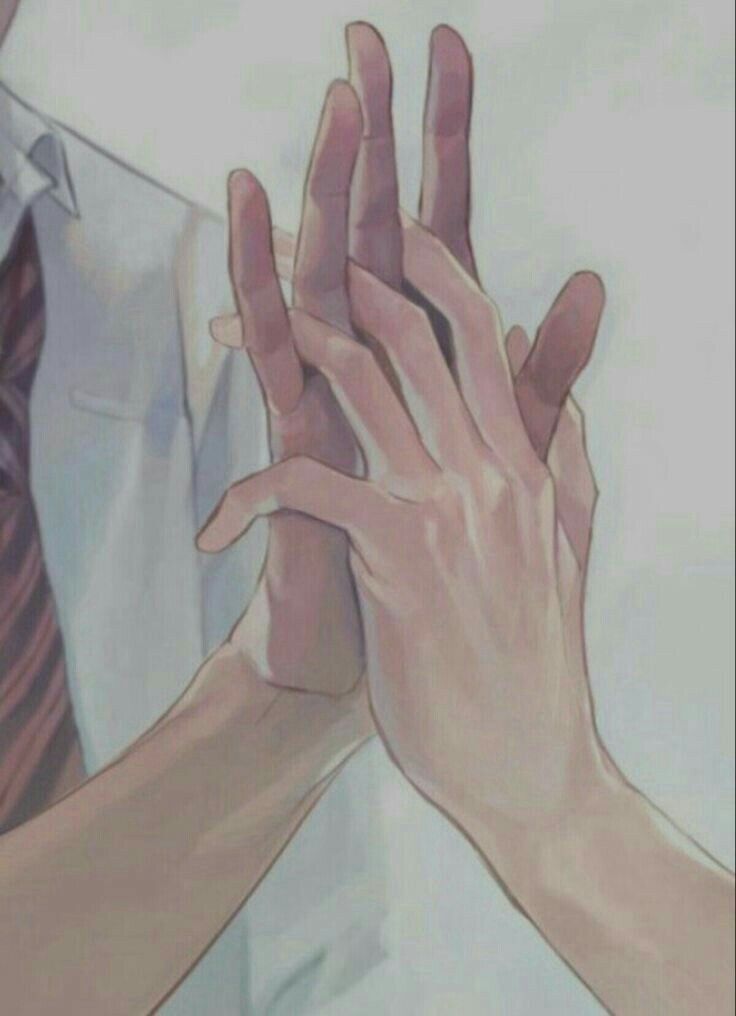
Mistakes are a vital part of improving drawing skills. They provide valuable lessons when analyzed. Consider these tips:
- Review Every Piece: After completing a drawing, review it critically. Identify areas that need work and make notes.
- Ask for Feedback: Sharing work with others can provide fresh insights. Constructive criticism can guide improvement.
- Experiment with Corrections: Instead of starting over, consider how to fix mistakes. This fosters problem-solving skills.
Reflecting on errors encourages resilience and growth. Embracing mistakes can lead to better techniques and a more confident style.
- 552shares
- Facebook0
- Pinterest552
- Twitter0

